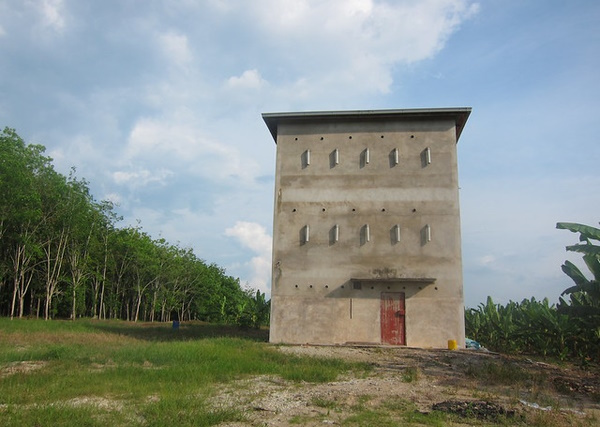Bird’s nest soup shacks, or “ruko”, enable an unusual method of farming traditionally cave-nesting Edible Nest Swiftlets for their nutrient-rich nests
On Nest to Goodness
Bird’s Nest Soup – the REAL deal, not the cut-rate concoction foisted on the unwary – isn’t made from your everyday, garden-variety bird’s nest. That would be gross and disgusting. Instead, the Swiftlet nests that are the basis of the recipe are constructed purely of bird saliva.
Stop coughing, choking and flailing about, you might spill the soup… and with the main ingredient costing up to $10,000 per kilo (around $4,500 per lb) for the ultra-rare Red Nest, you don’t want to spill a single drop! (images at top via khendsiong, above via shankar s.)
It’s the Egg-conomy
The skyrocketing price of Swiftlet nests used to make the Chinese delicacy Bird’s Nest Soup has had a noticeable effect on the numbers of the cave-nesting birds, though not the one you might expect.
People who harvest these nests have realized that more birds = more nests = more money, and since constructing more of the caves in which the White-nest Swiftlet (Aerodramus fuciphagus) prefer to build their nests isn’t a practical proposition, they’ve settled on the next best thing: artificial nest houses. A construction boom of wood and concrete nesting barns has boosted the population of Swiftlets, along with their valuable and edible nests. (image via Ahmad Safir)
Road to Salivation
Let’s examine these edible nests, built by male swifts over a period of approximately 35 days using their own saliva. Swifts are related to hummingbirds and are insectivorous. Like those other cave-dwellers, bats, swifts have evolved a form of echolocation that enables them to navigate to and from their nests deep inside caves.
The nests themselves are vaguely cup-shaped and are affixed to the cave walls with the birds’ gummy saliva. The saliva acts as a powerful cement that holds the nests together, while giving them a light color and a gauzy appearance. (image via Marcel Holyoak)
Do your culinary cravings radiate more toward seafood? Check out Gone Fission: Chernobyl’s Cooling Pond Fish Farm!
